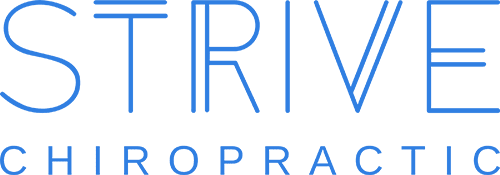How Chiropractic Care in Newport Beach CA Can Help Scoliosis
How Chiropractic Care Can Help Scoliosis
Diagnosing and Treating Adolescent Scoliosis
Scoliosis screenings are often part of elementary and middle school health exams. However, scoliosis can be easily missed in Newport Beach CA, as the onset and development are usually gradual and only noticeable when bending over.
Scoliosis can sometimes cause pain and muscle imbalances that cause the spine to pull on attached muscles, ligaments and ribs. These symptoms are visible and can include:
- The ribs and shoulder blade sticking out on one side of the back.
- One shoulder hanging lower than the other.
- The pelvis thrusting forward on one side.
- One leg appearing shorter than the other.
- Persistent back pain.
Think your child may have scoliosis? Learn more about this condition as well as treatment options.
Scoliosis is a back condition that causes the spine to curve abnormally to the side. The majority of cases develop in children between the ages of 9 and 14 years. A very pronounced front-to-back curve is called a kyphosis. Neither scoliosis nor kyphosis usually need treatment; however, many cases can be helped or kept from progressing with chiropractic care. More severe cases may require medical attention.
Scoliosis can be caused by a neuromuscular condition (meaning the curve is caused by a condition affecting muscles or nerves of the back), bone abnormalities, or congenital birth defects. However, 8 out of 10 people have idiopathic scoliosis, which means the cause is unknown. While idiopathic scoliosis isn’t exactly a hereditary condition, one out of every four people living with scoliosis have at least one family member with the same condition.
Symptoms of Idiopathic Scoliosis in Newport Beach CA
Scoliosis can be easily missed, as the onset and development are usually gradual and only noticeable when bending over.
However, scoliosis can sometimes cause pain and muscle imbalances that cause the spine to pull on attached muscles, ligaments and ribs. These symptoms are visible and can include:
- The ribs and shoulder blade sticking out on one side of the back.
- One shoulder hanging lower than the other.
- The pelvis thrusting forward on one side.
- One leg appearing shorter than the other.
- Persistent back pain.
Diagnosing Idiopathic Scoliosis
Medical professionals may diagnose scoliosis by examining the bulge that appears on the patient’s back when bending forward. X-rays, MRIs, and CT scans can also be used to assess the exact angle of the spinal curve.
Idiopathic Scoliosis Treatment
Finding the most effective treatment depends on several criteria, including:
- Age, and whether the patient is still growing.
- Gender – scoliosis in girls tends to worsen more quickly.
- The severity of the spine’s curve.
- The exact location of the scoliosis – for example, the upper (thoracic) or lower (lumbar) back.
- The chance that scoliosis may progress.
Traditionally, scoliosis treatments include:
- Physiotherapy: specific exercises to help prevent scoliosis from worsening. Ideally these exercises (known as physiotherapeutic scoliosis specific exercises) should be performed at least twice a week.
- Back braces: although a brace doesn’t cure scoliosis, it can prevent further progression. If the scoliosis is moderate or becoming worse, a back brace may be necessary.
- Observation: a specialist may simply suggest regular appointments to make sure the scoliosis is not getting worse.
- Surgery: the goal of surgery is to correct the curve, stabilize the spine and fuse the curve. These operations are typically lengthy procedures that involve many months of recovery and aren’t always successful.
Chiropractic Treatment for Scoliosis
Chiropractic care is a completely different approach to scoliosis treatment, as it seeks to understand each patient’s individual experience and root cause of discomfort.
Chiropractic is most successful with milder cases of scoliosis. Treatment begins with a thorough evaluation of your health journey, lifestyle, and any other factors that impact your daily wellbeing.
A regimen of gentle chiropractic adjustments apply pressure to reposition the curvature of the spine, greatly reducing its abnormal curve. When the body has the space to heal itself, the spine can return to its natural curvature, relieving both pain and inflammation.
As the spine shifts, any tension in the muscles melts away, limiting muscle spasms associated with scoliosis and greatly reducing daily discomfort. As the treatment progresses, mobility and range of motion naturally increases.
Because chiropractic treatment does not use medication, it can be safely combined with many of the traditional treatments. As an example, you might wear a back brace in between adjustments or add therapeutic massage to your treatment plan.
Are you experiencing scoliosis complications, or suspect your child might have scoliosis? Make an appointment online or call us at (949) 222-2215 so we can discuss helping you live a pain-free life, starting now.
This article is for informational purposes only, and is not a substitute for in-person advice or care from a medical professional.

